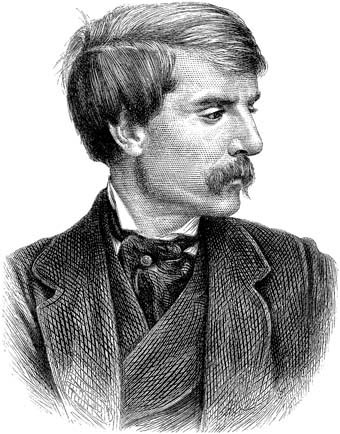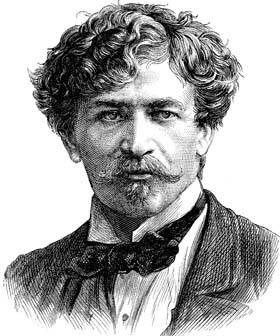
Catherine Crommelin was born at St. Quentin on 20 June 1632. She was the 5th child of Jean Crommelin and Rachel Tacquelet. She married her first husband, Francois de Coninck, at Rouen on 10 May 1654. She married her second husband, Robert Oursel, in November 1665. While keeping the de Coninck home in Rouen, they also had a home in Le Havre where Robert Oursel had several whaling ships.
A rich trove of correspondence spanning some 150 years records the
life and times of the de Coninck family. Catherine Crommelin was an early contributor to this voluminous collection having been the wife of Francois de Coninck. She bore her husband 5 children. After Francois' death, Catherine married again to Robert Oursel and bore him a son and 3 daughters. This boy, (Robert Oursel Jr.), was in the company of his uncle, Daniel Crommelin, at Jamaica when the boy succumbed to the yellow fever epidemic that was ravaging the island in 1693.
Maryse Trannois, our steadfast researcher residing in St. Quentin, France, has surprised us again by uncovering this trove of historic correspondence in the archives of the Reformed Protestant Museum in Paris. Catherine's letters date as far back as 1675. She wrote some 150 letters to her son, Frederic de Coninck (1660-1722) who had moved to Hamburg where he was engaged in business. The period in which she wrote is notable for its backdrop of religious persecution because the Edict of Nantes was about to be revoked in 1685. These letters shed light on the stress and tensions that existed at the time and are being translated into English by Miff Crommelin of Mission, B.C., Canada. Here now are some notes regarding this collection of correspondence...
The De Coninck Family at Le Havre and Rouen, France from 1682 to 1691
The de Coninck family has judiciously preserved from generation to generation a substantial collection of family correspondence, the first of which dates back to 1676 and which continued for more than a century and a half. These letters, numbering more than 1500, are of inestimable value to the history of the de Coninck family and are of wider interest especially to French protestants because of the period which they transcend.
Furthermore we have various notes thanks to Pastor N. Weiss who provided extracts regarding the epoque of the Revocation which is without doubt the main subject dealt with in the correspondence. We will begin by giving a bit of a background regarding the diverse correspondents.
Francois de Coninck, born at Antwerp (Anvers) on 3 January 1621, was the son of Hans de Coninck (died 1675) and of Marie de Buckere (died 1671), both descending from notable Flemish families. He settled at Rouen around 1650 and there formed a counting house of commerce which became prosperous through his efforts. On 19 April 1654 at the Protestant temple of Quevilly, he married a huguenot, Catherine Crommelin, and embraced the reformed religion on that occasion. His young wife was born at Saint Quentin on 20 June 1632 of a wealthy manufacturing family which also originated in Flanders.
Her grandfather, Jean Crommelin, seigneur of Camas, founded in 1595 at Saint Quentin the industry of batiste cloth which he imported from Belgium. He married Marie de Semery of a noble Picard family. Jean Crommelin (1603-1659), his son, succeeded him as the head of the factory and took Rachel Tacquelet (1609-1686) as his wife who bore him 15 children of whom Catherine was the fifth. From her union with Francois de Coninck there followed five children, all baptised at the Protestant temple of Quevilly (Rouen) of whom four attained adulthood.
1. Catherine de Coninck, born at the end of January 1655, baptised on 7 February, died in 1746 at The Hague. At Quevilly on 23 April 1679, she married Jean Camin, a lawyer at Rouen where they lived until the revocation of the Edict of Nantes. They then fled to Rotterdam. Baptised at Quevilly on 29 September 1655, he was the son of Jean Camin and Suzanne Le Roy. He died at Rotterdam around 1705. Seven children were born unto them, two boys and two girls surviving Catherine at the time of her death. The eldest boy was captain in the (?) regiment, in the service of the queen of Great Britain. The second son, named Abraham, lived near his mother in Amsterdam where she had a business since the death of her husband. Her eldest daughter, Marie, was also in Amsterdam and her younger daughter, Catherine, married Fréd. Pigon of London where they lived.
2. Jean de Coninck, baptised on 1 February 1656, died on 4 September 1661 at Rouen.

3. Francois de Coninck, baptised on 1 November 1657, died single in February 1695 at Rouen after having abjured his faith.
He was involved in a lawsuit regarding a claim against the estate of his father which no doubt hastened the death of his mother.

4. Frederic de Coninck was born at Rouen on 22 October 1660, baptised on the 30th of that month. Following various journeys to Holland, Germany and England, he finally settled as a tanner at Schiedam, Holland where he died on 27 March 1722. He married Marie Camin in London on 7 November 1686. She was born at Abbeville, England on 14 November 1659, the daughter of Louis Camin and Anne Santerre. She died at Schiedam on 16 April 1724 after having given birth to 8 children. When she fled from France in 1685 to join her fiance in England, she was captured and interned for many months at a convent near Dieppe having refused to abjure. It was only a year later that she was finally able to marry. This dramatic history forms a large part of our correspondence.

5. Jean de Coninck, their son, was baptised at Quevilly on 24 September 1662. His wife was Marthe Duval (1654-1687) whom he married in 1684 at Rouen and with whom he fled as religious refugees to London. She died there several years later and left him two daughters, Catherine and Marie, who settled in Amsterdam. While travelling to Rotterdam on business Jean drowned on the way to visit his brother-in-law, Jean Camin, where he was staying. Confused in an impenetrable fog, he fell into a canal in August 1690.
Several months prior to the birth of their last child on 8 April 1662, Francois de Coninck died at his residence on the Rue du Vieux-Palais, at Rouen. After a period of three and a half years, Catherine Crommelin re-married at Quevilly on 15 November 1665. Her second husband, Robert Oursel was baptised at Sanvic (Le Havre) on 27 January 1634, son of Robert Oursel (1607-1686) and Ester La Canne. From that union were born four more children, all baptised at Quevilly.

1. Robert Oursel, baptised on 17 October 1666, died during a yellow fever epidemic in Jamaica in 1693 where he went in the company of his uncle, Daniel Crommelin.

2. Marie Oursel ("Manon"), baptised on 12 August 1668, died single around 1744 in Berlin.
3. Rachel Oursel, baptised on 20 November 1670, died in Holland in 1742. She married there around 1716 Abraham Bilbaut, a pastor at Dordrecht, later at Middelbourg. She died on 28 February 1750 and left no children.
4. Ester Oursel ("Terotte"), baptised on 2 July 1673, died at Amsterdam in 1738. She married around 1700 Philippe Meusnier, lawyer at Amsterdam who died in 1744. They had no children.

Robert Oursel descended from an old family in Le Havre where it is still represented today notably in the lawyer profession. At first having settled at Rouen, he returned to Le Havre around 1675 where he apparently died around 1708. He lived on the Rue d'Estimauville, perhaps at No. 35 which was owned by the Oursel family for a long time. His wife pre-deceased him on 19 December 1694.
Our correspondence collection begins in 1682. At this time Frederic de Coninck was on his way to Hamburg accompanied by his younger half-brother, Robert Oursel. He aspired to make for himself a career at a time when persecution against the Protestants was already ravaging France. In due time he stopped at Antwerp (Anvers)...

